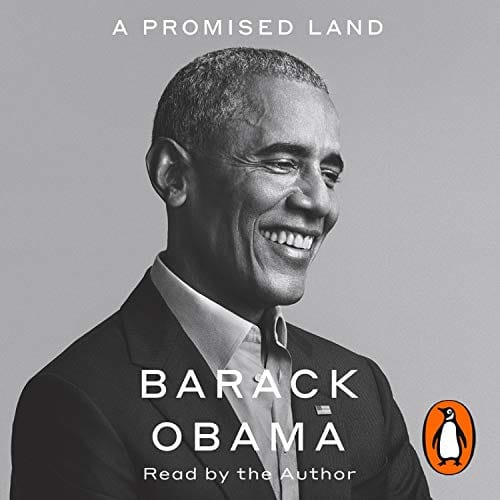A Deep Dive Into Barack Obama’s “A Promised Land”
Explore Barack Obama's memoir "A Promised Land," examining its themes, narrative style, and relevance in 2024.

Introduction
Few presidential memoirs have captured the public imagination quite like Barack Obama’s “A Promised Land.” Published in November 2020, the book quickly topped bestseller lists around the globe. Readers were eager for an insider’s account of the historic 44th U.S. president’s rise to the Oval Office and his formative first term. Yet "A Promised Land" is more than a political chronicle; it is a deeply personal reflection on identity, democracy, and the enduring pursuit of a more perfect union. This article explores the memoir’s key themes, narrative style, and lasting relevance.
Context and Publication History
Obama announced a two-volume memoir deal soon after leaving office. The first installment, “A Promised Land,” spans his childhood in Hawaii and Indonesia, his community organizing days in Chicago, the bruising 2008 campaign trail, and significant milestones of his presidency up to the 2011 raid on Osama bin Laden’s compound. Clocking in at 768 pages, the work is thorough yet approachable, a hallmark of Obama’s oratory and writing style. The book’s release generated media buzz because no recent U.S. leader had taken readers behind the scenes in such granular detail while major players were still alive and active.
Major Themes and Takeaways
Hope and Idealism
At its core, “A Promised Land” is a testament to hope—Obama’s signature campaign message in 2008. From his early years grappling with mixed heritage to his unlikely ascendance in national politics, the memoir illustrates how optimism fuels resilience. Obama recounts moments when belief in the American project seemed naïve, yet he argues that hope remains the only sustainable engine for progress.
Pragmatism in Governance
While the book frequently celebrates idealism, it never shies away from the grind of governing. Obama details the messy negotiations behind the Affordable Care Act, the auto-industry bailout, and the 2009 economic stimulus package. He shares frank assessments of compromises made, votes lost, and bills rewritten, revealing the tension between campaign promises and political realities. The message is clear: aspirations must meet strategy if change is to endure.
Race and Identity
Obama’s reflections on race permeate the narrative. He candidly reveals moments of self-doubt, such as questioning how white Midwestern voters would respond to his candidacy, and instances of overt racism he encountered on the trail. Yet he maintains an unwavering belief in the possibility of a multiracial democracy. By intertwining personal anecdotes with broader societal observations, Obama offers readers both memoir and social commentary.
Family and Sacrifice
Beyond policy and politics, “A Promised Land” shines a light on the Obama family. Michelle Obama, Malia, and Sasha appear not as supporting characters, but as central pillars shaping the man and the president. Obama recounts missing family dinners, juggling fatherhood with statecraft, and leaning on Michelle’s candid feedback. The humanizing vignettes remind readers that historic achievements often come at personal cost.
Narrative Style and Voice
One reason the memoir resonates with such a wide audience is Obama’s evocative prose. His sentences are fluid yet precise, blending humor, vulnerability, and policy wonkiness with anecdotal flair. Readers receive a crash course in international diplomacy one moment, then laughter-inducing asides about Secret Service nicknames the next. The tonal shifts keep 700-plus pages engaging while structuring the story around pivotal decision points.
Moreover, Obama is unafraid of self-critique. He questions whether his incrementalist approach was bold enough to confront systemic challenges. He wonders if he could have better navigated partisan gridlock. By foregrounding his doubts, Obama disarms critics who might otherwise accuse the memoir of self-congratulation. The honesty adds depth and positions the book as both historical document and reflective journal.
Historical Significance
Released amid a pandemic, racial justice protests, and a fraught U.S. election season, “A Promised Land” doubled as a timely civics lesson. Obama revisits debates over health care, climate change, and foreign policy that still dominate headlines. His nuanced recollections of negotiating with Republican leaders provide context for the hyper-partisanship gripping Washington today. As such, the memoir helps readers trace a direct line from decisions made between 2008 and 2011 to the political landscape of the 2020s.
Additionally, the book contributes to a limited canon of presidential accounts authored by leaders of color. By chronicling his experience, Obama expands the historical record and offers future scholars a primary source for understanding race and governance in the early twenty-first century. The inclusion of detailed policy memos, meeting transcripts, and personal notes also grants historians a treasure trove of data to mine.
Public Reception and Critiques
Critics largely praised “A Promised Land” for its lucid writing and candid introspection. The New York Times lauded its “elegant, thoughtful” narrative, while The Guardian highlighted Obama’s rare ability to balance humility with authority. Still, some reviewers argued that the memoir’s breadth sometimes dilutes depth, particularly on foreign policy chapters compressed to fit the book’s already hefty length. Others wished Obama had delved deeper into immigration reform failures or surveillance controversies.
Readers, however, responded enthusiastically, propelling the memoir to sell more than 3.3 million copies in its first month. Book clubs, podcasts, and virtual events dissected its chapters, and social media buzz extended the conversation across demographics. The widespread engagement underscores the enduring appetite for inside stories about consequential governance, especially when told by a figure whose personal narrative mirrors a changing America.
Why “A Promised Land” Matters Today
As democracies worldwide confront polarization and disinformation, Obama’s reflections offer both caution and guidance. He warns that progress is neither linear nor guaranteed, yet he also demonstrates how principled leadership can carve pathways through gridlock. The detailed recounting of the Affordable Care Act, for example, provides a blueprint for policy architects working on complex legislation today.
Furthermore, the memoir models transparency in leadership. By revealing insecurities and mistakes, Obama challenges the myth of infallible leaders and invites citizens to demand similar candor from current officials. In doing so, “A Promised Land” transcends partisan divisions, appealing to anyone invested in reviving public trust.
Conclusion
"A Promised Land" stands out not only as a riveting personal journey but also as a strategic case study in governance. Its blend of idealism and pragmatism, coupled with an unflinching look at race, identity, and family, renders it both timeless and timely. Whether you approach the book as a political junkie, history enthusiast, or simply a curious reader, Obama’s memoir offers valuable insights into the trials and triumphs of steering a diverse nation toward its highest ideals. In chronicling the road already traveled, it prompts us to imagine—and work toward—the promised land that still lies ahead.



